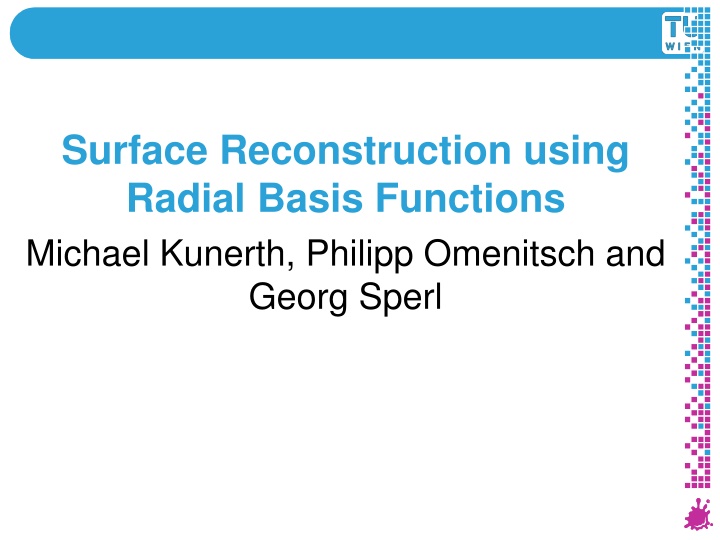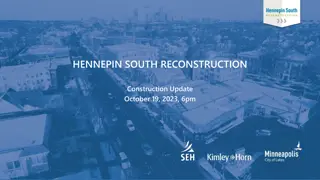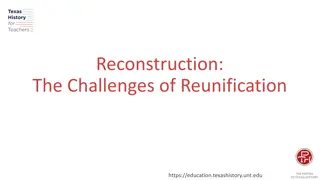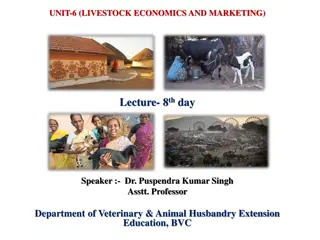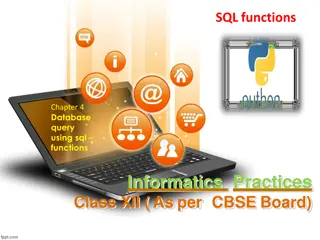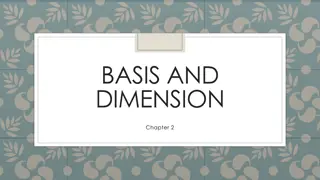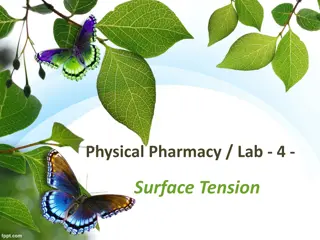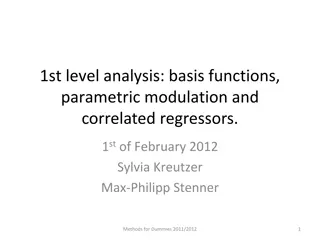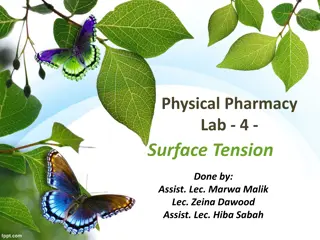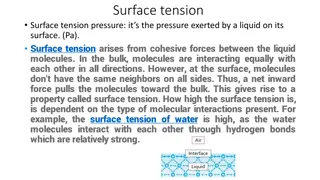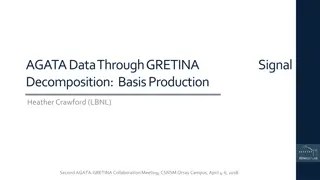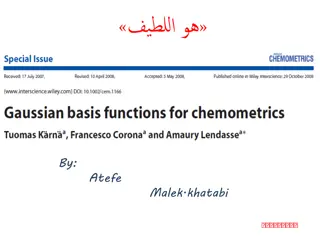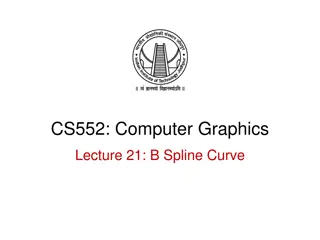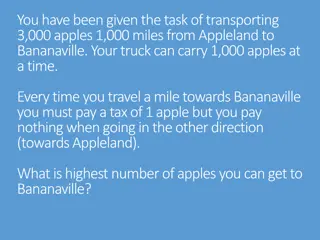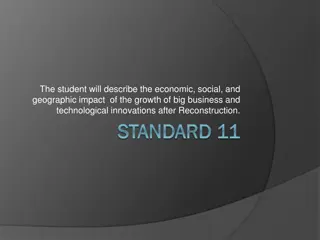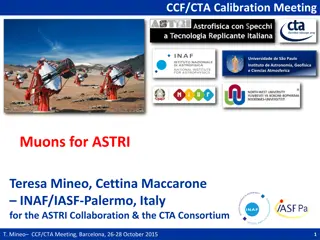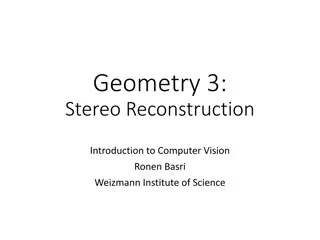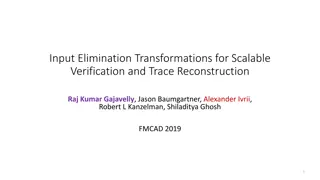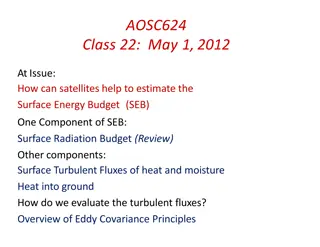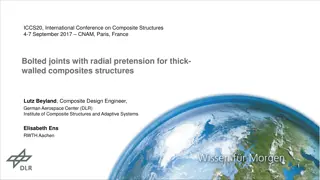Surface Reconstruction Using Radial Basis Functions
This article discusses surface reconstruction techniques using radial basis functions, focusing on methods such as hierarchical floating RBFs, least-squares Hermite RBFs, and Voronoi-based reconstruction. The approach involves representing surfaces as zero level sets of implicit functions, emphasizing the use of scaled and translated radial basis functions for interpolation and approximation. The discussion also covers topics like gradients, center reduction, and partition of unity to avoid trivial solutions and enhance the reconstruction process.
Download Presentation

Please find below an Image/Link to download the presentation.
The content on the website is provided AS IS for your information and personal use only. It may not be sold, licensed, or shared on other websites without obtaining consent from the author.If you encounter any issues during the download, it is possible that the publisher has removed the file from their server.
You are allowed to download the files provided on this website for personal or commercial use, subject to the condition that they are used lawfully. All files are the property of their respective owners.
The content on the website is provided AS IS for your information and personal use only. It may not be sold, licensed, or shared on other websites without obtaining consent from the author.
E N D
Presentation Transcript
Surface Reconstruction using Radial Basis Functions Michael Kunerth, Philipp Omenitsch and Georg Sperl 1Institute of Computer Graphics and Algorithms 2 <insert 2nd affiliation (institute) here> <insert 2nd affiliation (university) here> Vienna University of Technology 3 <insert 3rd affiliation (institute) here> <insert 3rd affiliation (university) here>
Outline Problem Description RBF Surface Reconstruction Methods: Surface Reconstruction Based on Hierarchical Floating Radial Basis Functions Least-Squares Hermite Radial Basis Functions Implicits with Adaptive Sampling Voronoi-based Reconstruction Adaptive Partition of Unity Conclusion 2 M. Kunerth, P. Omenitsch, G. Sperl
Problem Description 3D scanners produce point clouds For CG surface representation needed Level set of implicit function Mesh extraction (e.g. marching cubes) Surface reconstruction with radial basis functions 3 M. Kunerth, P. Omenitsch, G. Sperl
Radial Basis Functions Value depends only on distance from center Function satisfies ??(?) = ??(|?|) 4 M. Kunerth, P. Omenitsch, G. Sperl
RBF Surface Reconstruction Surface as zero level set of implicit function Weighted sum of scaled/translated radial basis functions ? ? = ?=1 Interpolation vs. approximation Surface extraction ? ?????(?) + ?(?) 5 M. Kunerth, P. Omenitsch, G. Sperl
RBF Surface Reconstruction contd. Gradients/normals to avoid trivial solutions Center reduction (redundancy) Center positions (noise) Partition of unity Globally supported / compactly supported RBF Hierarchical representations 6 M. Kunerth, P. Omenitsch, G. Sperl
Hierarchical Floating RBFs Avoid trivial solution by fitting gradients to normal vectors Assume a small number of centers Center positions viewed as own optimization problem Radial function: inverse quadratic function 7 M. Kunerth, P. Omenitsch, G. Sperl
Hierarchical Floating RBFs contd. Floating centers: iterative process of refining initial guess of centers Partition of unity Octree with multiple levels approximating residual errors 8 M. Kunerth, P. Omenitsch, G. Sperl
Least-Squares Hermite RBF Fit gradients to normals Subset of points used as centers Radial function: triharmonic function 9 M. Kunerth, P. Omenitsch, G. Sperl
Least-Squares Hermite RBF contd. Adaptive greedy sampling of centers Choose random first center Choose next center maximizing function residual and gradient difference to nearest already chosen center using the previous set s fitted function Partition of unity Overlapping boxes 10 M. Kunerth, P. Omenitsch, G. Sperl
Least-Squares Hermite RBF contd. Pros: Well distributed centers Preserve local features Accurate with few centers Cons: Slow / high computational cost 11 M. Kunerth, P. Omenitsch, G. Sperl
Voronoi-based Reconstruction 12 M. Kunerth, P. Omenitsch, G. Sperl
Adaptive Partion of Unity 13 M. Kunerth, P. Omenitsch, G. Sperl
Conclusion RBF surface reconstruction methods Main differences: Which centers should be used? How to optimize existing centers? different distance functions Smoothing: less noise vs. more detail Tradeoff: speed vs. quality 14 M. Kunerth, P. Omenitsch, G. Sperl
Sources Y Ohtake, A Belyaev, HP Seidel 3D scattered data approximation with adaptive compactly supported radial basis functions Shape Modeling Applications, 2004. Proceedings Samozino M., Alexa M., Alliez P., Yvinec M.: Reconstruction with Voronoi Centered Radial Basis Functions. Eurographics Symposium on Geometry Processing (2006) Ohtake Y., Belyaev A., Seidel H.-P.: Sparse Surface Reconstruction with Adaptive Partition of Unity and Radial Basis Functions. Graphical Models (2006) Poranne R., Gotsman C., Keren D.: 3D Surface Reconstruction Using a Generalized Distance Function. Computer Graphics Forum (2010) S muth J., Meyer Q., Greiner G.: Surface Reconstruction Based on Hierarchical Floating Radial Basis Functions. Computer Graphiks Forum (2010) Harlen Costa Batagelo and Jo o Paulo Gois. 2013. Least-squares hermite radial basis functions implicits with adaptive sampling. In Proceedings of the 2013 Graphics Interface Conference (GI '13) 15 M. Kunerth, P. Omenitsch, G. Sperl
